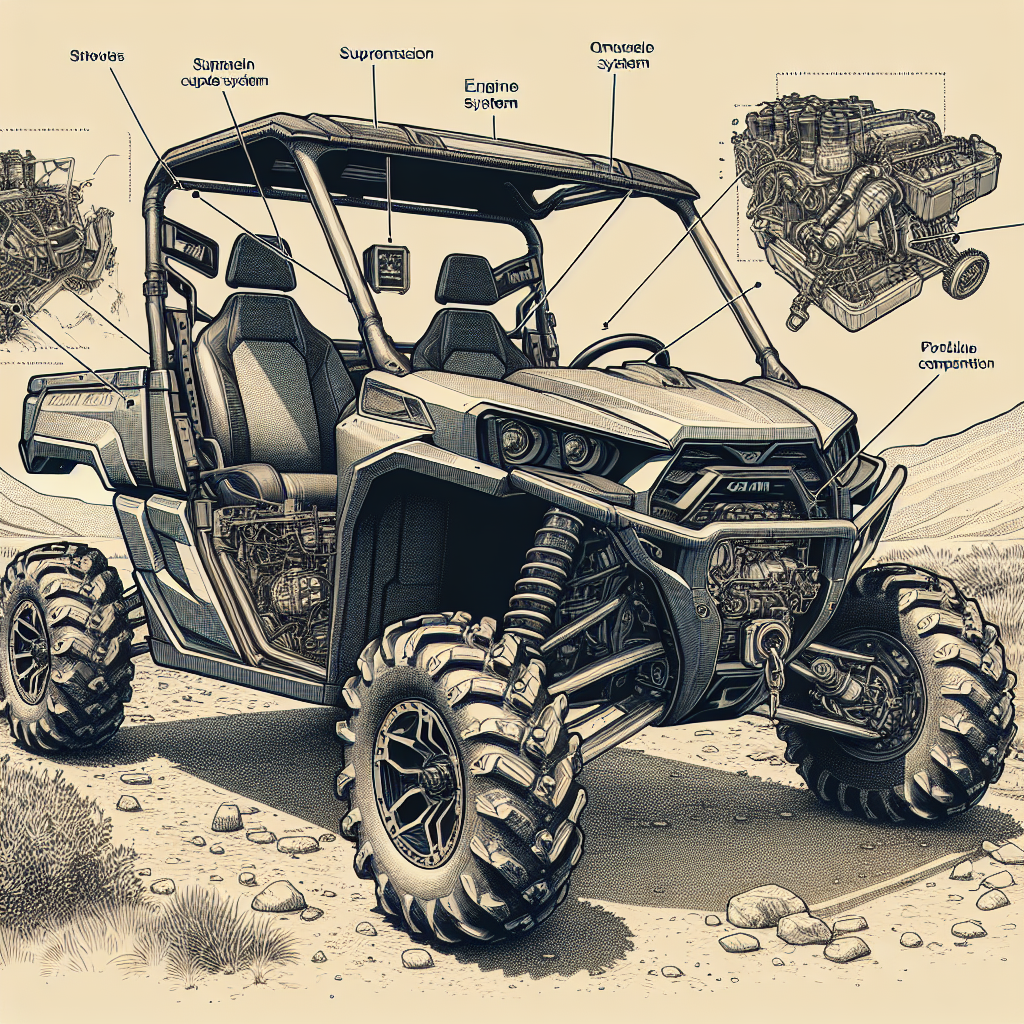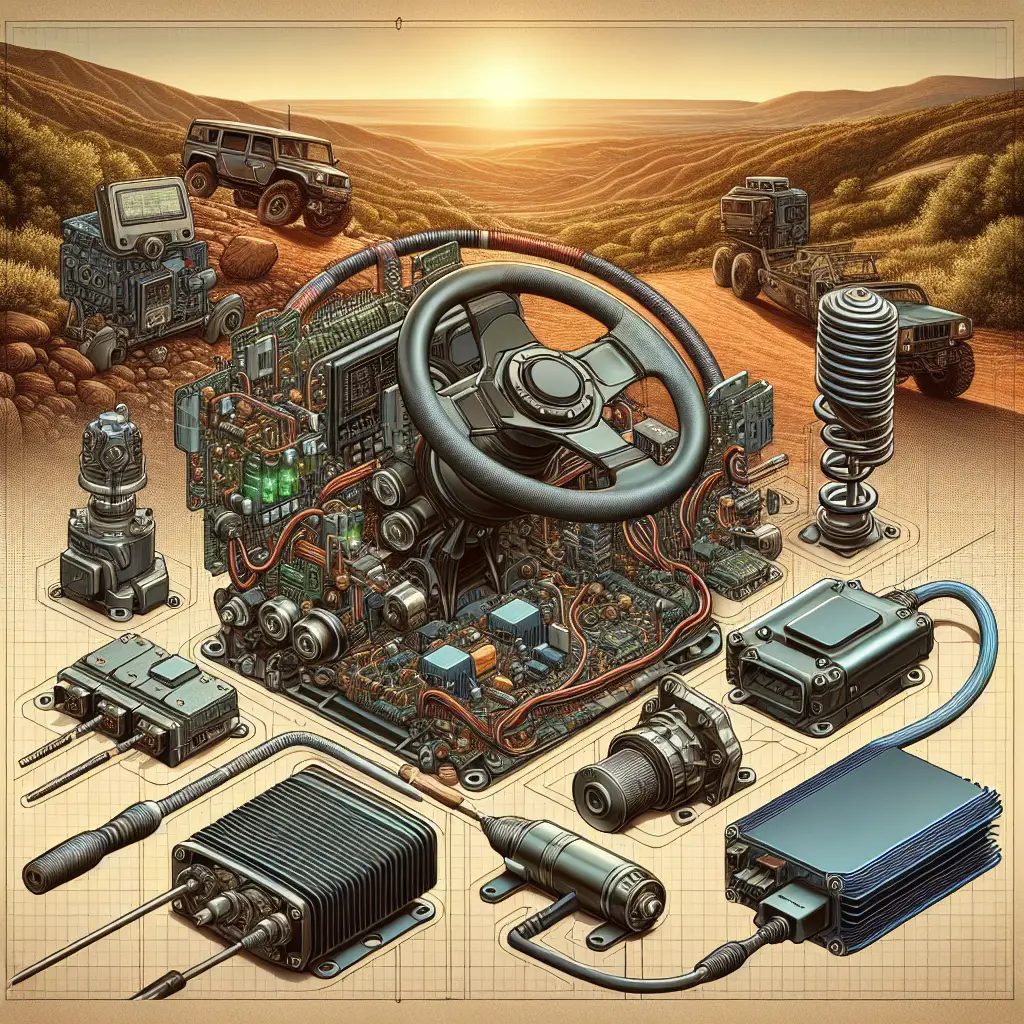The Honda Pioneer 1000, a popular utility terrain vehicle (UTV), is designed to provide an ideal balance between work and play. With a versatile design that caters to both recreational and utility needs, it has garnered a significant following among off-road enthusiasts and workers who require a reliable vehicle for tough terrains. Known for its robust construction and advanced features, the Pioneer 1000 offers a combination of power, technical innovations, and comfort that makes it a standout choice in its class.
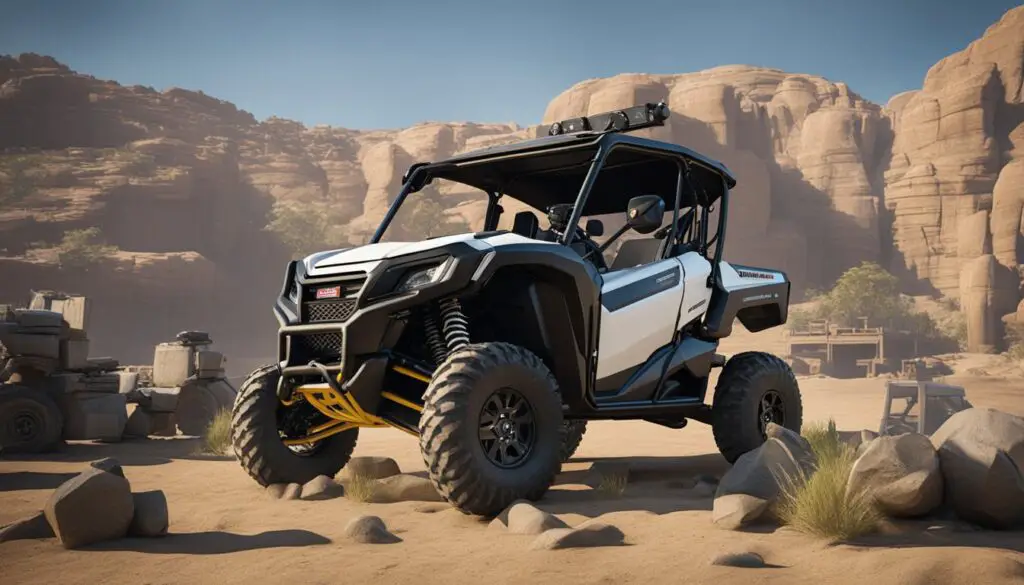
Despite its strong reputation, the Honda Pioneer 1000 is not immune to issues. As with any complex machinery, certain problems can arise that may impact the overall performance and reliability of the vehicle. Owners and potential buyers should be aware of common concerns such as clutch issues, which can affect acceleration and handling, and engine troubles that might lead to stalling or overheating. Knowing these potential pitfalls and having access to troubleshooting information can help you maintain the longevity and enjoy the full capabilities of your Honda Pioneer 1000.
Key Takeaways
- Understanding common issues can enhance maintenance and reliability for your Honda Pioneer 1000.
- Knowledge of performance problems aids in proactive vehicle care and troubleshooting.
- Safety insights and potential recall information are crucial for a secure ownership experience.
Design and Comfort
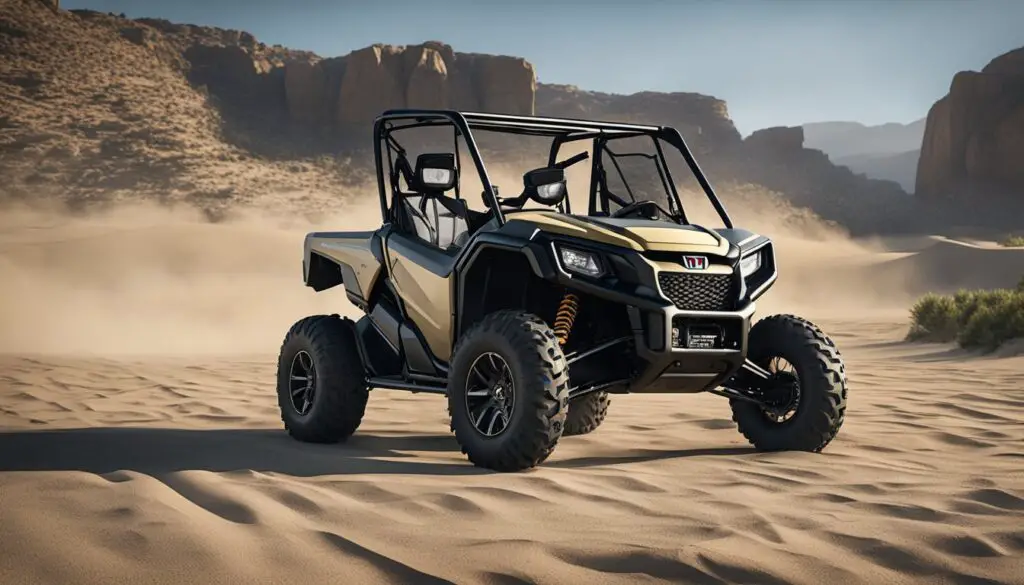
In the Honda Pioneer 1000, you’ll notice that comfort and utility are key aspects, but there are distinct areas where improvements could enhance your experience.
Seating and Cab Comfort
Your comfort in the Honda Pioneer 1000 is fundamental for those long rides on rough terrain. The seats, modeled with modern materials, may not offer the cushioning you’d expect. Some riders find the seating equivalent to sitting on a plank, which may be especially noticeable during extended use. The cab’s design focuses on utility over luxury, so you might find the need for additional seat padding to improve your comfort on those bumpy paths.
Utility and Cargo Space
The Honda Pioneer 1000 is a utility vehicle at its core, designed to carry loads for work or adventure. The cargo bed is spacious for your gear, but some users report issues with the cargo bed getting stuck in the down position. This can be a hiccup in practicality, affecting your ability to haul what you need. Despite this, the Pioneer 1000 offers significant utility when it’s performing as intended, supporting both your work tasks and off-road adventures.
Performance and Handling
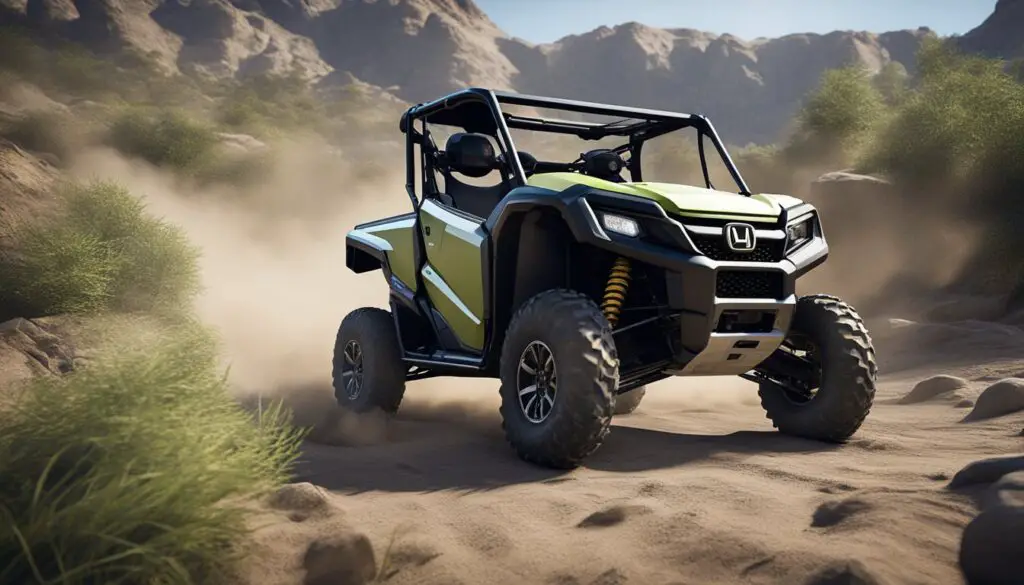
When you get behind the wheel of the Honda Pioneer 1000, you’re in for a ride that combines raw power with smooth handling. Here’s a look at what you can expect from the motor, the gears, and the way it takes on rugged terrain.
Engine and Power Delivery
The heart of your Honda Pioneer 1000 is a robust 999cc liquid-cooled twin-cylinder engine. With this engine, you get a reliable power delivery that’s designed for strength and efficiency. However, some owners have reported power loss, which could be due to a worn-out camshaft or components like a clogged air filter.
Transmission and Shifting
Your SxS features a fully automatic Dual Clutch Transmission (DCT) with manual shift mode. While the DCT is generally smooth, there may be instances of trouble shifting gears. It’s important for you to know that any hesitancy or jerkiness can often be the result of a faulty clutch and is not a behavior you should ignore.
Steering and Suspension
Equipped with Electronic Power Steering (EPS), your Pioneer 1000 allows you to handle winding trails with ease. The EPS provides adaptable assistance and contributes to the UTV’s overall stable and responsive feel. The independent front and rear suspension offer a comfortable ride, even on challenging terrains.
Off-Road Capabilities
Taking your Pioneer 1000-5 off the beaten path? Expect it to shine with its side-by-side (SxS) configuration that’s tough on trails. The differential lock coupled with the UTV’s adaptable traction system assists you in navigating tough spots. Nevertheless, remember conditions can be testing, and overheating is something to look out for during extended periods of high-speed off-roading.
Maintenance and Reliability
Maintaining your Honda Pioneer 1000 ensures it remains reliable for your off-road adventures. Regular maintenance, addressing common mechanical issues, and ensuring electrical system reliability are key to a smooth experience.
Scheduled Maintenance
To keep your Honda Pioneer 1000 in top condition, adhere strictly to the scheduled maintenance plan. Regular oil changes are crucial for your vehicle’s longevity. Here are basic items to check regularly:
- Oil and Filter: Change every 100 hours of use.
- Air Filter: Clean every 100 hours or sooner if you ride in dusty conditions.
- Brake Lines and Pads: Inspect before each ride and replace as needed.
- Proper maintenance like greasing the fittings and checking the coolant ensures safety and reduces the risk of breakdowns.
Common Mechanical Issues
The Honda Pioneer 1000 is sturdy but like any vehicle, it may develop mechanical issues. Pay special attention to:
- Clutches: Problems manifest as poor acceleration or shuddering. An overheated or faulty clutch needs immediate attention.
- Brake System: Listen for unusual noises or changes in braking responsiveness. Regularly check for wear and tear.
- Spark Plugs and Air Filters: Clogs or wear can lead to power loss, especially when going uphill or downhill.
Electrical System Reliability
Electrical issues, while less common, can be perplexing. Maintain battery connections and look out for:
- Starting Issues: If you’re having trouble starting your Pioneer 1000, first check the battery, starter motor, and fuel filter.
- Be aware of any safety recalls involving the electrical system, and get those issues addressed at a certified mechanic to ensure your vehicle’s safety and functionality.
Specific Issues and Troubleshooting
Recognizing the typical issues with your Honda Pioneer 1000 is the first step towards troubleshooting. Get familiar with the symptoms and solutions to keep your ride in top condition. https://www.youtube.com/embed/7kpiRFk0vdU
Overheating Problems
Your Honda Pioneer 1000 overheating can be alarming. Ensure the air filter is clean to promote good airflow, and check the heat shield for damage. If the problem persists, inspect the oil level, as insufficient lubrication can cause excessive heating.
Clutch and Transmission Complications
If you’re experiencing clutch problems or malfunctioning transmission, these could be signs of a deeper issue. Pay attention to any shuddering or poor acceleration, indicating a potential clutch fault. Warming up your vehicle for five minutes before use can improve oil flow and performance. Regular checks of the oil levels are also crucial.
Fuel and Exhaust Concerns
Should your Pioneer 1000 suffer from power loss or abrupt shutdowns, the spark plug and clogged fuel filter should be inspected. Muffler overheating indicates a need to examine the exhaust system closely for blockages or damage.
Electrical and Wiring Challenges
Starting issues often point to electrical troubles, such as a dead battery, faulty starter motor, or problems with the wiring harness. Be thorough in checking these components and ensure all connections are secure and corrosion-free for optimal performance.
Enhancements and Upgrades
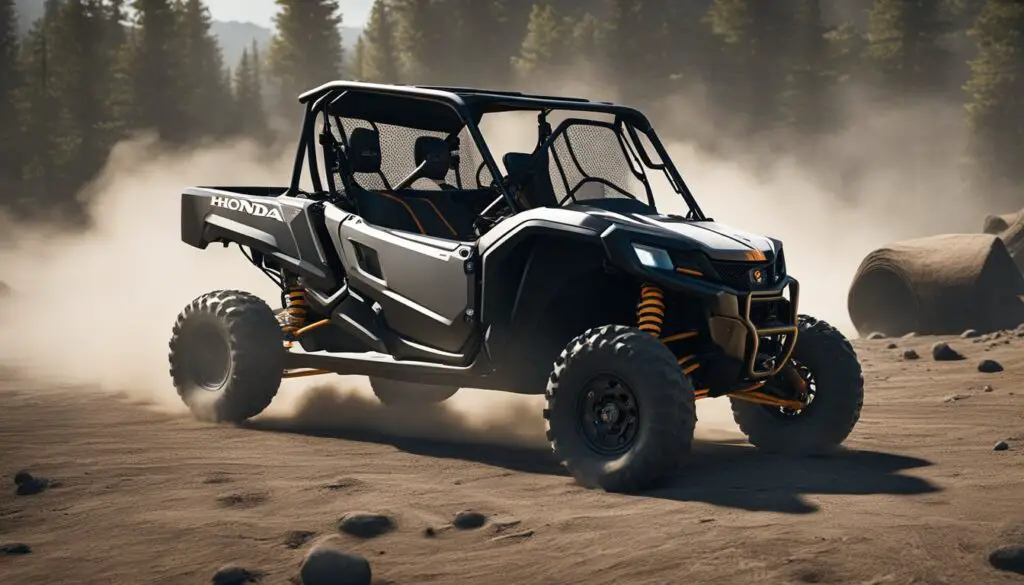
When you’re looking to give your Honda Pioneer 1000 a performance boost, there are numerous upgrades you can consider. These enhancements are often geared towards improving your vehicle’s power, handling, and overall efficiency, ensuring you get the most out of your off-road excursions.
Performance Upgrades:
- Exhaust System: Upgrade your exhaust for better flow and increased power.
- Air Intake: A high-flow air intake system can help your engine breathe better.
- Clutch Kits: Installing a high-quality clutch kit can resolve common clutch issues and improve transmission responsiveness.
Transmission and Oil:
- Transmission Maintenance: Regularly check your trans fluid to maintain smooth gear shifts.
- Graphite Oil: Consider using graphite oil for improved lubrication, which might help in reducing clutch and transmission-related problems.
Specific Solutions:
- Clutch Adjustment: Proper clutch adjustment is crucial to prevent slippage and wear.
- Spark Arrestor: Cleaning or replacing the spark arrestor can prevent power loss and maintain engine health.
It’s important you use compatible parts for your upgrades to avoid any unnecessary complications. Always consult with a professional or refer to your owner’s manual before performing modifications.
| Upgrade | Benefit | Consideration |
|---|---|---|
| Exhaust System | Improved power and sound | May affect emission controls |
| Air Intake | Enhanced engine performance | Requires regular cleaning |
| Clutch Kits | Smoother transmission, resolves clutch issues | Proper installation crucial |
| Graphite Oil | Better lubrication, reduced wear | Compatibility with your UTV |
| Spark Arrestor | Maintains engine health, prevents power loss | Regular inspection needed |
By carefully selecting and installing these enhancements, you can enjoy a more thrilling and reliable ride in your Honda Pioneer 1000.
Safety and Recalls
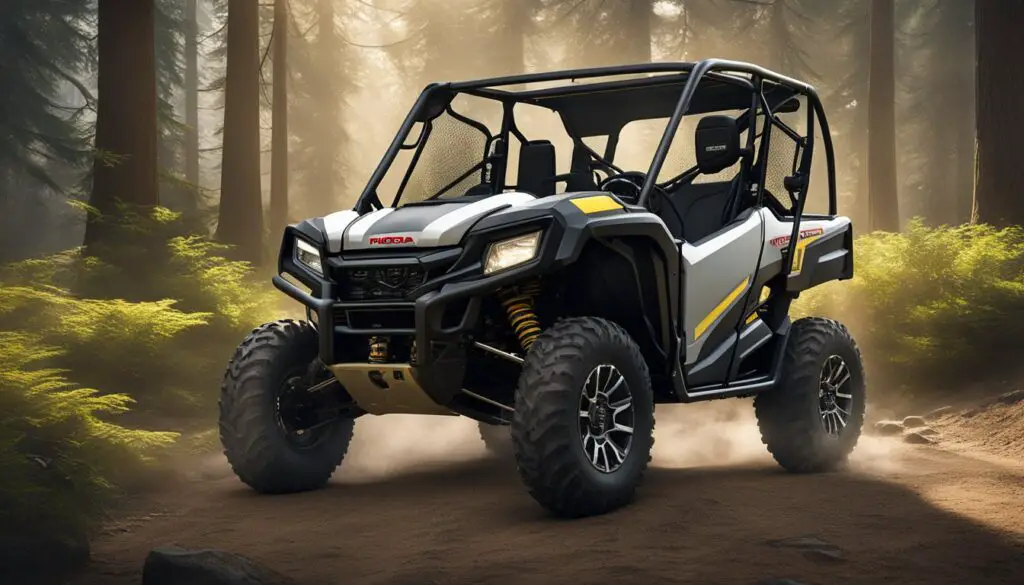
When it comes to your Honda Pioneer 1000, staying informed about safety and recalls is crucial for your peace of mind and safety. Over the years, several recalls have been issued addressing various issues that might relate to your vehicle.
Clutch Issues: You may have heard about the safety recall for 2016-2017 models regarding the clutch slipping. This was due to reports of clutch overheating and could lead to more serious problems if not addressed.
Steering Defects: More recently, in certain 2017-2020 Pioneer 1000 models, a recall was issued for Electric Power Steering (EPS). This was to inspect the Lower Steering Joint B, a crucial component in ensuring you maintain steering control.
Remember, a faulty brake hasn’t been widely reported as a recall issue specifically for the Pioneer 1000, but it’s always good to stay alert to any braking problems and report them.
In case your vehicle is part of a recall:
- Contact your dealer: They can confirm the recall and guide you through the process.
- Inspection and Repair: Any authorized Honda dealer should inspect and if necessary, repair the issue at no cost to you.
It’s always better to stay proactive with these recalls to maintain the safety and longevity of your Pioneer 1000. Keep an eye on any notifications from Honda and regularly check in with your dealer. If you’re unsure about your vehicle’s recall status, a quick call to a Honda dealer with your VIN will clarify your situation.
Comparative Analysis
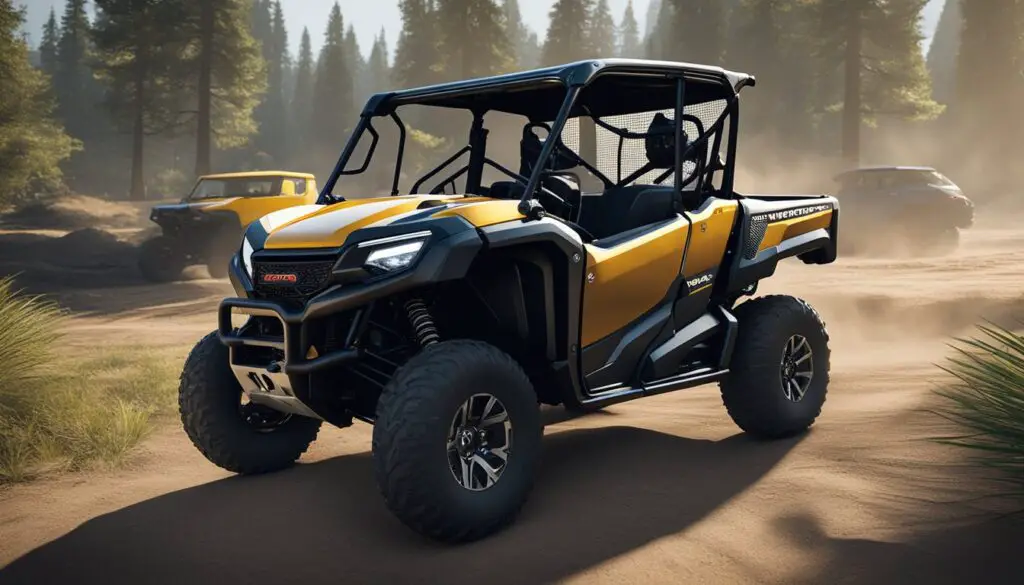
In exploring how the Honda Pioneer 1000 stacks up against other utility terrain vehicles (UTVs), you’ll find its performance, durability, and common issues in sharp relief contrasted with its peers. This comparative glance will help contextualize where the Honda Pioneer 1000 sits within the UTV landscape.
Honda Pioneer 1000 vs Other UTVs
Performance:
- Honda Pioneer 1000: You might note the power loss problem, especially uphill or downhill, which can often stem from the vehicle’s camshaft, spark plugs, air filter, or spark arrestor issues.
- Honda Pioneer 700: As the ‘younger sibling’ in the lineup, it tends to have less power and fewer features but can be less prone to the issues faced by the 1000 model.
- Polaris Ranger: Known for its smooth ride and robust powertrain, the Ranger is often commended for its strong performance attributes.
Durability:
- Honda Pioneer 1000: It has been reported that issues like seat tearing add durability concerns, while the fuel pump recall indicates that some parts may be less reliable. Clutch problems can also arise, creating a challenge for consistent performance.
- Honda Pioneer 700: Generally considered a solid UTV, but like any machine, it can experience wear and tear over time, particularly if not maintained properly.
- Polaris Ranger: While durable, users of the Ranger have reported issues with the drivetrain and electrical systems that can lead to costly repairs.
Common Issues:
- Honda Pioneer 1000: Problems include jerky acceleration due to clutch issues, hot seats and cab, difficulty shifting gears, and the aforementioned potential power loss.
- Honda Pioneer 700: Fewer reports of the hot seat and cab issue, but like the 1000, can still suffer gear shifting troubles.
- Polaris Ranger: Owners often bring up concerns regarding the complexity of electrical issues and sometimes harsh ride quality on rough terrain.
SxS Vehicle Considerations:
When considering any side-by-side (SxS) vehicle, it’s crucial to assess the commonality and severity of reported issues. This will guide you in making a well-rounded decision that evaluates not just the machine’s capabilities, but also its longevity and your potential maintenance commitment.
Given this information, you can weigh the pros and cons, bearing in mind that while the Honda Pioneer 1000 has its distinct issues, it still maintains a competitive stance in power and performance among Side by Side vehicles.
Ownership Experience
As a Honda Pioneer 1000 owner, you’ll find that riding this side-by-side offers a blend of adventure and practicality. Let’s explore what you can expect in terms of pros and cons, as well as the community and support available to you.
Pros and Cons
Pros:
- Reliability: The Honda Pioneer 1000 is known for its robust build and reliable performance in various conditions.
- Utility: With a towing capacity and the ability to seat multiple passengers, your Pioneer 1000 serves as a versatile tool for both work and play.
Cons:
- Comfort: Some owners report that the seating can feel firm and less comfortable during longer rides.
- Transmission Issues: You may encounter shifting problems which can usually be mitigated by letting the vehicle warm up and checking the oil levels.
Community and Support
Community:
- Connect with fellow enthusiasts through online forums and clubs. Here, you can share experiences, tips, and get advice on everything from maintenance to trail riding.
Support:
- Manuals and Guides: Access to a wealth of resources including owner’s manuals and maintenance guides.
- Authorized Dealers: When you need professional assistance, Honda’s network of authorized dealers offers reliable service and support.
Conclusion
The Honda Pioneer 1000 demonstrates impressive power and utility, placing it among the top UTV models available. While it’s a robust machine, like any vehicle, it does have its share of issues which may require attention.
Your familiarity with the common problems can streamline the maintenance process. Remember:
- Power Loss: This can occur under various conditions. Keep an eye on the camshaft, spark plugs, air filters, and spark arrestor.
- Faulty Clutch: Symptoms like shuddering, poor acceleration, and overheating suggest clutch issues. Regular checks are advisable to prevent worsening.
Recalls: Stay informed about any manufacturer recalls. Honda often covers costs related to these, mitigating repair expenses.
If you encounter these problems:
- Inspect your UTV immediately.
- Diagnose the issue, maybe with professional help if needed.
- Fix early to avoid more serious damage.
Remember to consult with experts or authorized service centers for genuine parts and advice. Your proactive approach to the Pioneer 1000’s maintenance can help ensure it remains a reliable and enjoyable workhorse for your off-road adventures.
Frequently Asked Questions
You’ve got questions about the Honda Pioneer 1000, and this section aims to address some of the most common concerns. Whether you’re wondering about longevity, speed, or specific model distinctions, you’ll find succinct answers below.
What are common issues reported for the Honda Pioneer 1000?
Common issues for the Honda Pioneer 1000 include power loss, especially during uphill or downhill rides, and problems related to the clutch such as poor acceleration and overheating. Other reported problems include abrupt engine shutdown and difficulty shifting gears.
How long does a Honda Pioneer 1000 typically last in terms of mileage?
The Honda Pioneer 1000 is known for its durability, and with proper maintenance, many users report it can last for thousands of miles. The exact mileage can vary based on usage and upkeep.
What is considered to be the maximum speed achievable by a Honda Pioneer 1000?
The Honda Pioneer 1000 can reach speeds upwards of 60 mph under ideal conditions. However, the actual top speed may vary depending on factors such as terrain, load, and any modifications to the vehicle.
Can the Honda Pioneer 1000’s fuel efficiency be compared to similar models?
The Honda Pioneer 1000’s fuel efficiency is competitive with similar side-by-side (SxS) vehicles. Exact fuel economy can vary, but it generally provides a balance of power and efficiency that stacks up well compared to peers.
In what ways does the Honda Pioneer 1000 model year 2021 differ from previous models in terms of reliability?
The 2021 Honda Pioneer 1000 model encompasses updates aimed at improving reliability, like enhanced drivetrain components and upgraded suspension. These changes address feedback from prior models to bolster overall performance and dependability.
Are there any recurring transmission problems with the Honda Pioneer 1000 that owners should be aware of?
Some owners have reported issues with gear shifting, which could indicate transmission problems. These might manifest as trouble shifting gears or experiencing jerky acceleration, potentially due to clutch or belt slipping. It’s important to keep an eye out for these symptoms and address them promptly.

